I know it feels like it is last week’s news already, but I was looking through an old copy of the Third Edition of the New Zealand Whole Earth Catalogue in the weekend, and discovered this little gem: an article about the Tiwai Point Aluminium Smelter, before it was even called that. In those days, it was known as the Comalco smelter – still part owned by Rio Tinto, even then, although of course Rio Tinto itself was owned by someone else. Who really actually owns it now? God only knows – certainly not the NZ tax-payer, who Bill Dipton Dipshit English has just volunteered to take $30million of your money to pay for it… and to get nothing in return.
Worst. Bargaining. Ever. Bill, you really are a plodder. But: given Quebec, perhaps it was the only “bargain” that could be driven.
Anyway – if you want to read the story behind the story – then read this story. All rights etc still belong to the Whole Earth Catalogue, of course – i hope they won’t mind me reminding you of the story.
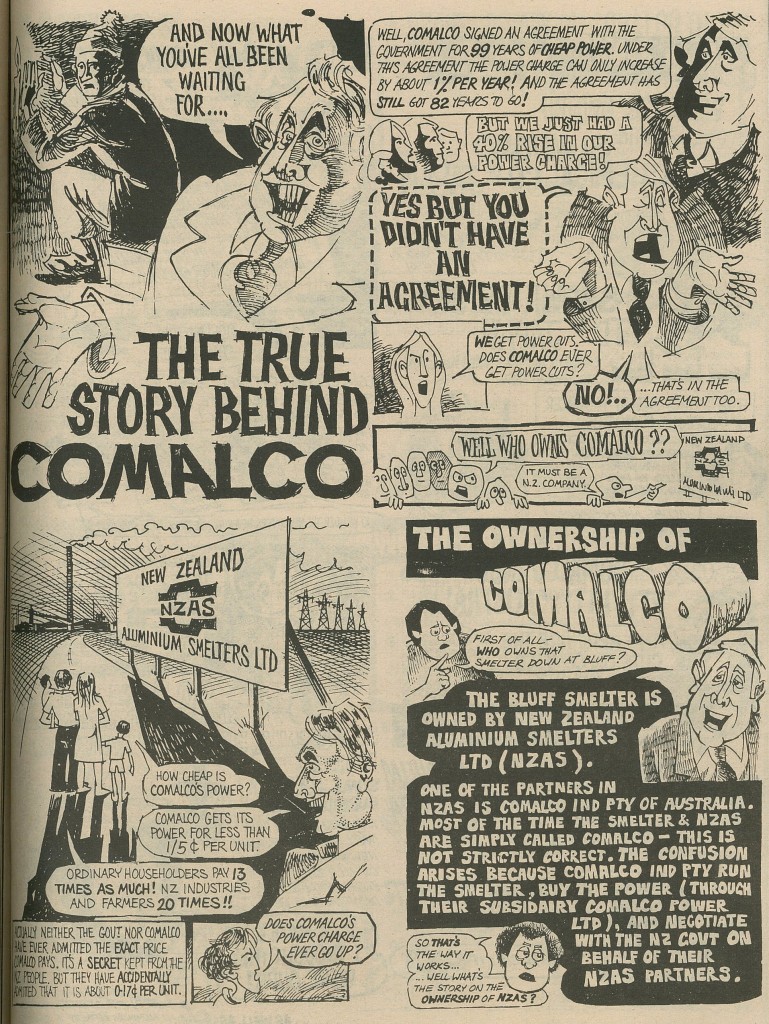
…
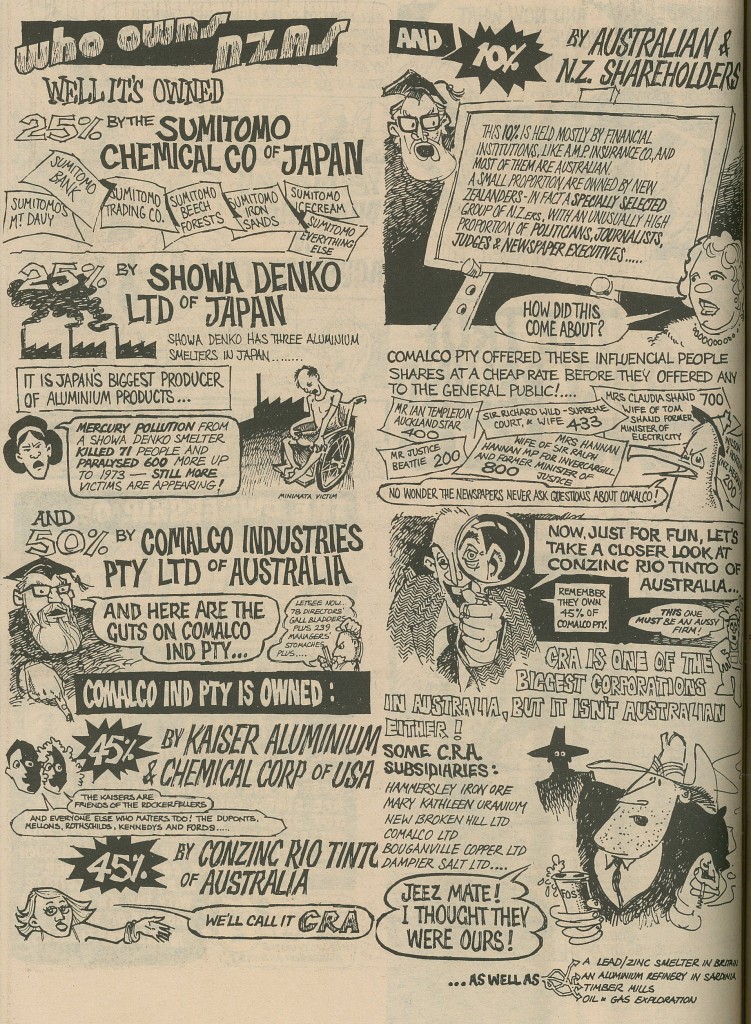
…
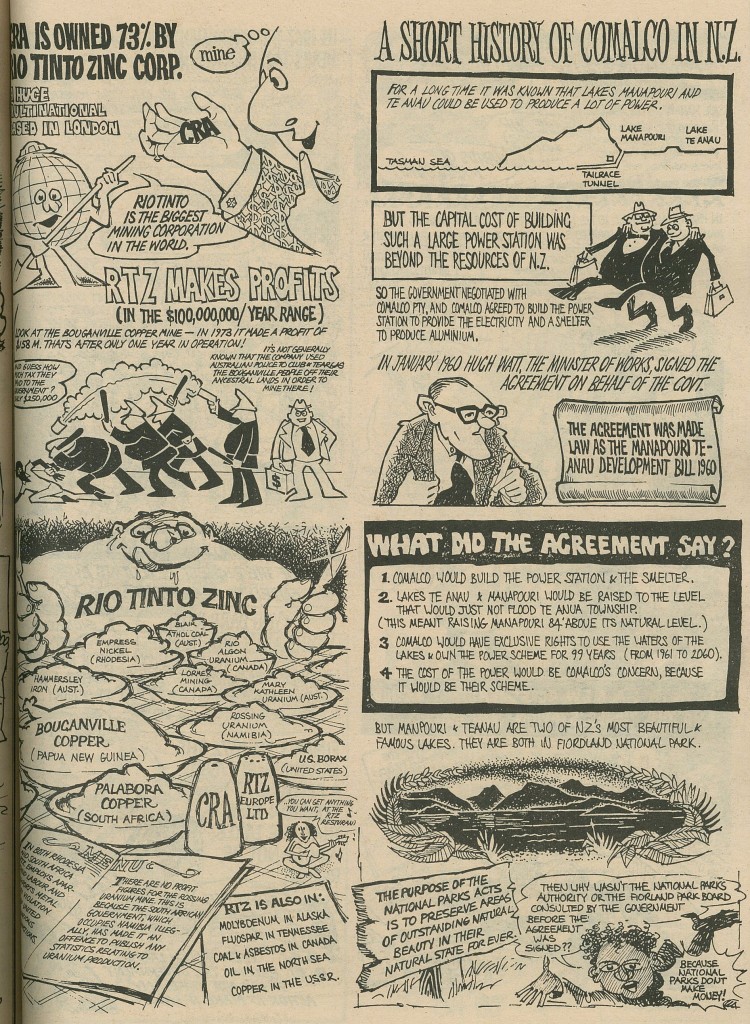
…

…
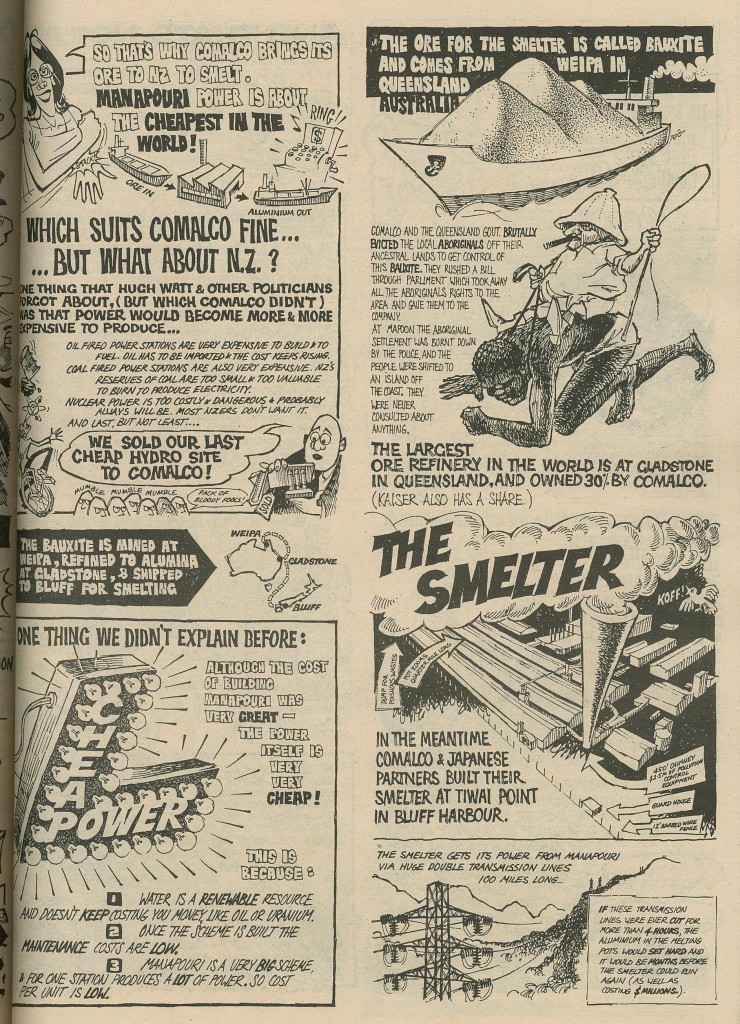
…
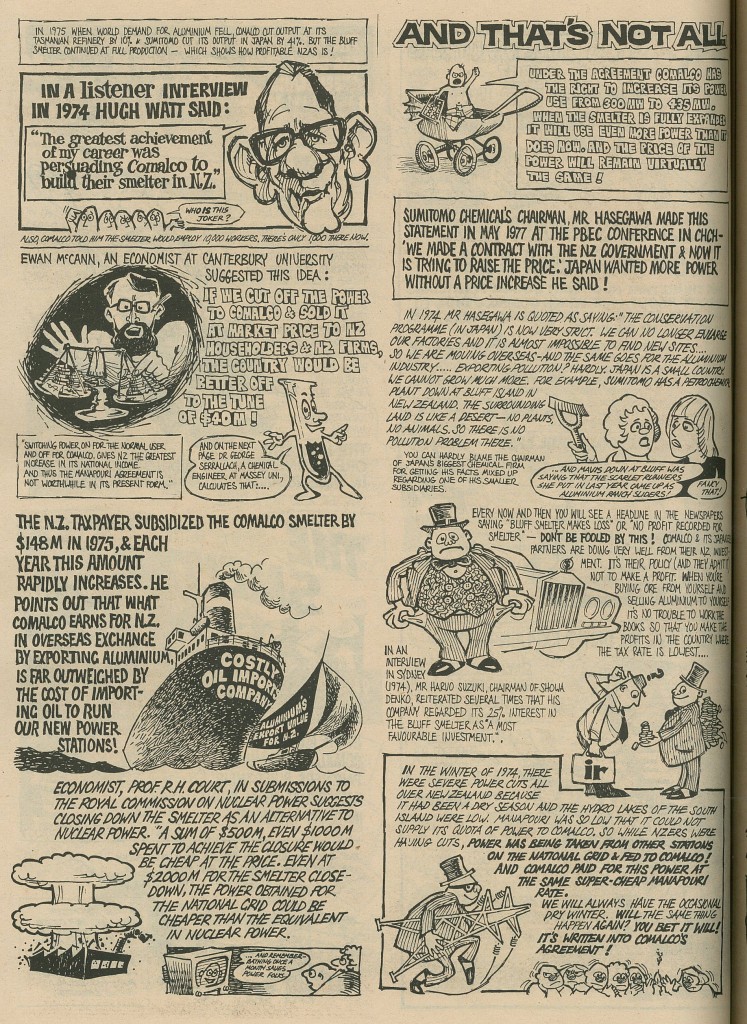
…

…
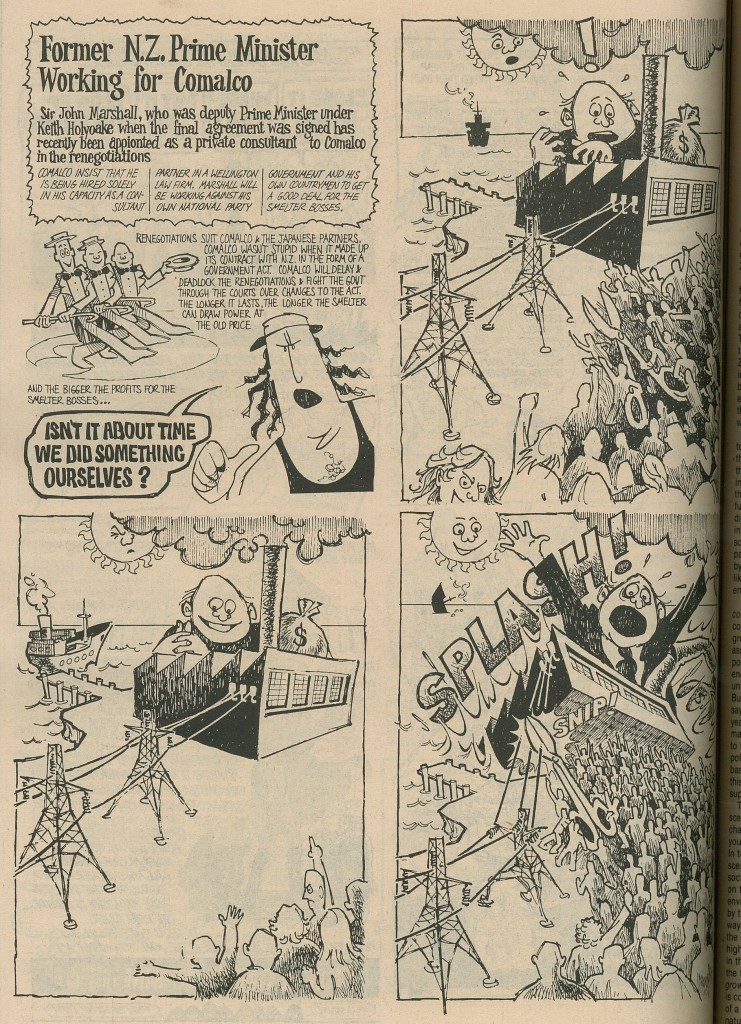
…
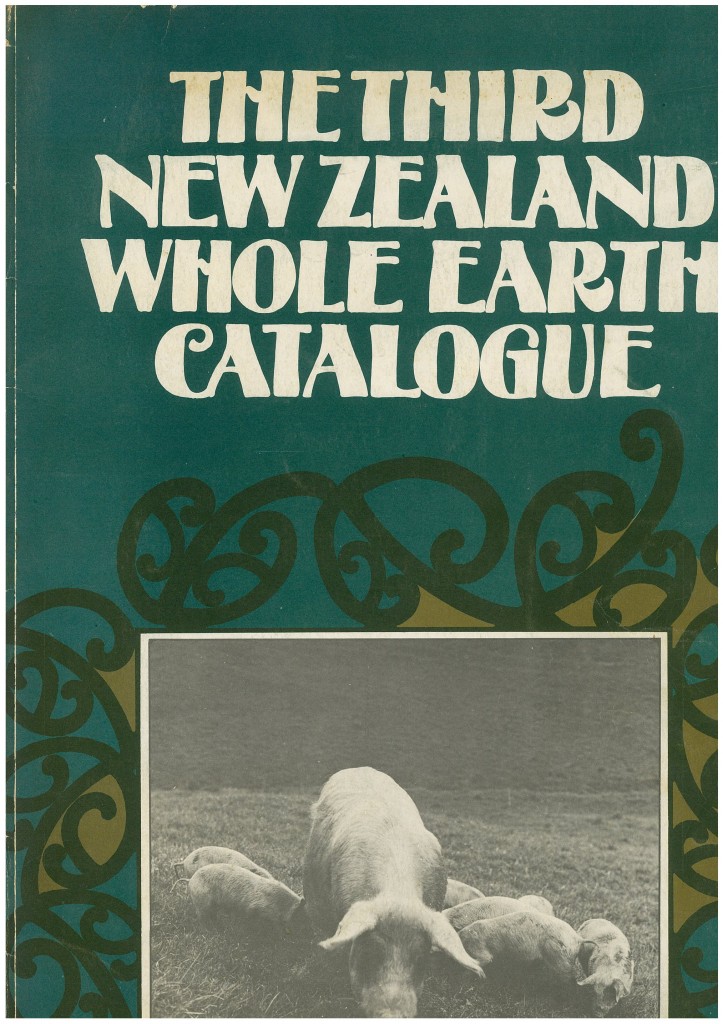

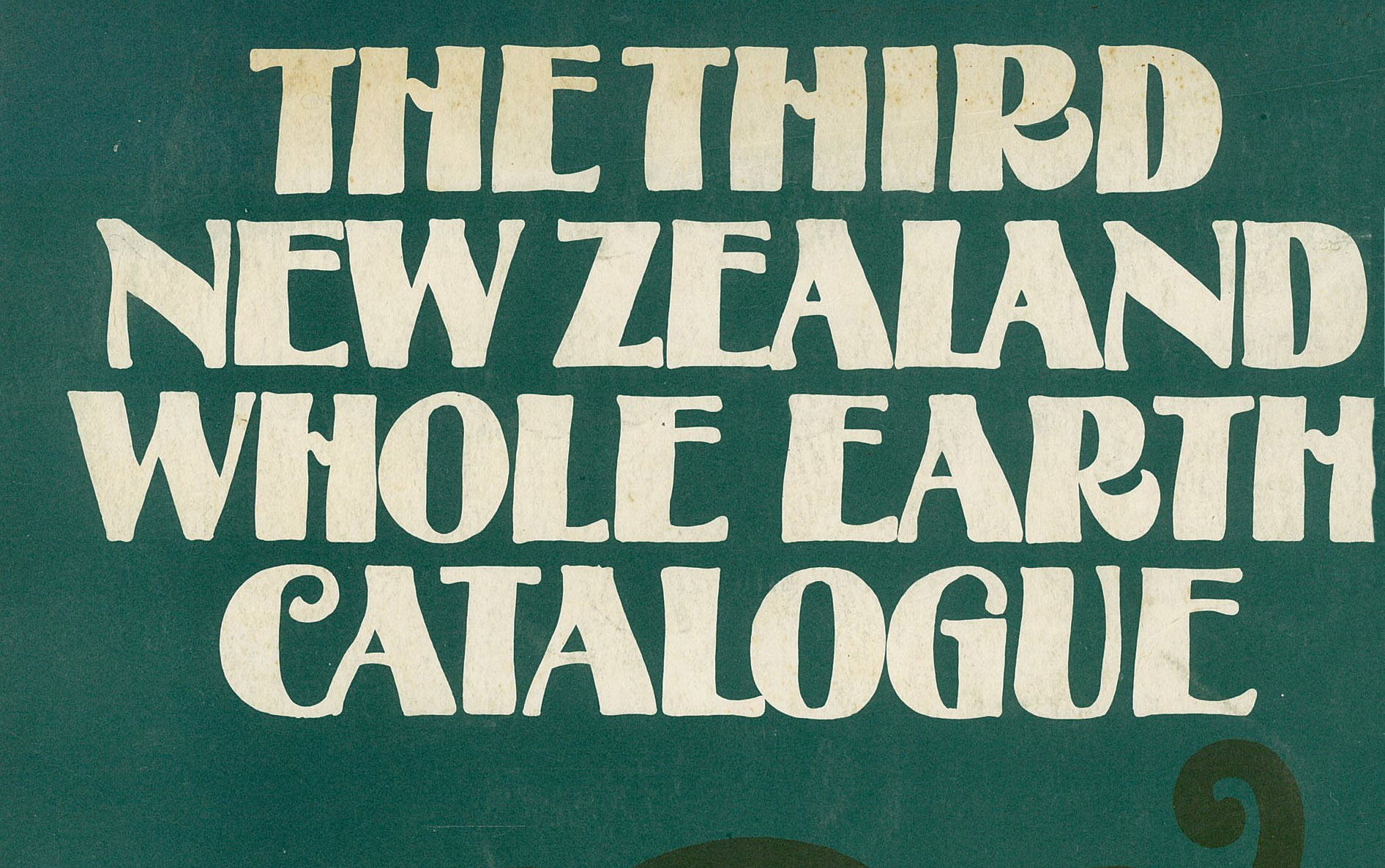



>Bill Dipton Dipshit English has just volunteered to take $30million of your money to pay for it… and to get nothing in return
The smelter underpins half the Southland economy. The money spent saved us a lot of unemployment benefits and the costs associated with Invercargill looking like Detroit. Just by the way it’s also a tiny proportion of the amount of money the Aussies spend subsidising car factories, and we probably end up with more jobs.
I wouldn’t have built the thing in the first place. It is the sort of Soviet-style big industry that NZ governments loved before Roger Douglas added some sanity to the NZ economy. But we’re sort of stuck with it now… It’s too big to fail.
There was a letter to the paper the other day that put it very well – unfortunately already gone from the DomPost website. But it went through and did the sums on the deal – something like 700 jobs at $50,000 per annum each, and worked out how long $30 million will last. Essentially, English has “bought” the jobs (for now) and so Rio Tinto are not just getting the energy for a special super low price (which is tied to our much higher electricity bills) but so now they basically don’t have to pay their work force either, so we can compete with the low wage economies in Asia. But he didn’t ask for, and certainly didn’t get, any guarantee on how long the smelter will stay open for – they could go in a year and just pocket the money. Is it any coincidence that Bill is one of the ‘local’ politicians, and so is he trying to buy his seat, as well as ‘save’ those jobs for the southlanders?
But so what are the options? One option would certainly be to call the bluff of Rio Tinto, and let the smelter be closed. If Rio Tinto want to walk away from the low cost deals with a quarter of New Zealand’s electricity, then let them. What if, then, NZ was to run the smelter ourselves? We’d still have to buy the bauxite from the Ozzies, but at the end of the day, any profits (if any) would stay in NZ. God forbid – we could actually have a home-grown NZ industry!
Or we could just let it close down, and give all kiwis cheaper power, and close down the stupid gas and coal powered power plants we have, so that NZ runs 100% on renewable fuel! But the flip side of that is that we would be down on our balance of payments as we aren’t exporting as much, plus we would have to find meaningful employment for another 700 southlanders.
But hey, nice score with the Whole Earth pics eh? Published by a bunch of old hippies in 1979 but still the cartoon is just as relevant today…
If it is uneconomic for Rio Tinto to run it, then it is going to be uneconomic for NZers (by which I presume you mean the government) to run it. Especially since we have no expertise managing an aluminium company or marketing aluminium, no vertically integrated source of bauxite, and no economies of scale. But now I start to see where the focus in the cartoons on the nationality of the smelter shareholders comes from… It’s the same anti-foreigner nationalism that we’re seeing today. Altho Japanese people bothered the cartoon authors (eg “Japan wanted more power without a price increase he said”, rather ludicrously attributing the comments of a single business person to an entire country), while Chinese people seem to bother Peters, Shearer, and Norman.
I had the power grid explained to me a few months ago. My understanding is that we’re not all going to be wallowing in cheap power if the smelter closes. Manapouri isn’t well integrated in to the grid. We’re up for several hundred million bucks worth of grid upgrades to use the electricity, and we’re still stuck with the power being down the wrong end of the country.
The DomPost today seems to agree with me that it’s a dumb deal :
http://www.stuff.co.nz/dominion-post/comment/editorials/9031937/Editorial-What-do-taxpayers-get-for-their-30m
But Davidp – you are probably completely correct in saying that it doesn’t integrate well with the Transpower grid, although I wonder if that has changed with the completion of the new Pole 3 switch station at Hayward’s Hill – apparently that has changed the scene quite a bit. It won’t however change the overall scene that with the present economic climate, the market for smelting aluminum is deeply uneconomic. Will that change? Over time, obviously, the price of Aluminium will fluctuate up and down, but as you say, Asian shelters can operate with lower labour costs, and also our smelter is now old, and urgently needs upgrading to more modern facilities. It’s not so much a white elephant any more, but a dead elephant.
I’m sure deao old Roger wouldn’t have cut this particular deal. It’s pretty much inevitable that the plant will close down – Bill has simply kicked the can down the road for another few years. Who knows though, perhaps Labour will be in power and properly nationalise it next time Rio Tinto threaten to walk out – and will spend millions more of our monies on the dead duck?
Pole 3 gives some added ability to shift more power north, but you still need to spend a couple hundred million to get the power to Benmore and the DC link…
Yes there are mega Aluminium plants coming on line in Asia over the next couple of years , but Tiwai is not a dead dog yet, It is one only a few plants that can efficiently produce very high quality Alumina that goes into products like precision electronics, (while this gets a premium price, it is still based of global bulk alumina prices)
The labour cost of producing Aluminium is not actually that high, in 2012 Tiwai spent ~90 million on wages/remuneration etc, but its raw material and electricity costs were ~470 million, ( they have to report their financials to the companies office each year)
Re: But hey, nice score with the Whole Earth pics eh? Published by a bunch of old hippies in 1979…
= dodgy as f**k “businessman” Alister Taylor who went on to rip-off young and old alike leaving a mass of bad-debts behind him. He was later associated with various Ayn Rand-esque groups along with other former-hippies of the era such as Alan Gibbs. Funny how so many of these bearded long-hairs moved from the idealistic utopian Marxist left to the idealistic utopian libertarian right.
John H – sounds like you’re speaking from experience? Were you one of the bearded long-hairs? :)
Hell no! The antithesis of the beardies more like it. The 1980’s punk scene was more my era of youthful idealism.
Actually, i have heard it said that the Whole Earth Catalogue was an attempt at the www Web, a booklet of all the information in the world that you could ever need to know. From memory, it was full of info on how to run a commune, how to plant and grow your own veges, knit your own socks, etc. Presumably a whole lot more?
Oh yes, there’s a whole lot more, including several pages in rather eye-watering detail on child-birth (Fish have been doing underwater births for years, but evidently it was pretty new for you humans)… but also Ways of life, Survival, Animal resources, Vegetable resources, Food, Shelter, Communications (including both CB radio and Ham radio), Environment/Ecology, Moving around, Energy, Learning, Crafts, Information, Consciousness, and Legal.
It’s beautifully, laughably naive by our jaded eyes – articles on Living in a Bus, Hot Water on the Move, Square dancing, Water-wheels, Mushrooms, Mud-brick housing, Aro Valley community, and oops – the NZ Herb Society. Can’t miss them out. But nothing on knitting that i can see…
If a Labour-led Govt was in the same boat, I’m guessing it would have pulled the rug from under Meridian Energy or otherwise suspended dividends. That, at least, would have weakened Meridian’s value and hence its case to be partially flogged off. The kind of territory strictly off-limits to Double-Dipton Blinglish – he probably would have burst a vein about “property rights” or “meddling in the market”. Pot meets kettle given his intervention in the Tiwai Point affair.
Well, there is pretty conclusive evidence that NZ’s electricity market is stuffed up, and rigged heavily in the favour of big corporations, rather than that of the small, individuals that we kiwis actually are. Even you, David P. All around the OECD, electricity prices have fallen in real terms, in every country except one: New Zealand. Our prices have gone steadily up for the last 10-15 years, and are now effectively double, while others have gone down. Meridian, New Zealand’s little renewable darling, just declared a profit today of – what was it? $300 million? $400 million? Whatever it was – A, it’s quite obscene to be making that much profit in my eyes, when the people it is making that profit off is us. You. Me. David P. but B, at least a healthy whack of that profit goes back tothe Government, some don’t feel too bad about them spending it all on smelters.
Once Meridian is sold, to the “mixture of retail and wholesale investors” that Don Key talks about, ie banks, private investment bankers, the Retirement Commission Fund, and – oooh – the “Mums and Dads” investors that actually just means rich white middle class people who drive large cars and happen to have several thousand spare cash sitting in an account, just for times like this. And for the majority of those just mentioned, within about 5 years, they will have “flicked it on” and it will have been snapped up by overseas investors. And any profits, if any, will leave the country. It’s not xenophobia, but I still don’t like it one bit.
Some small corrections to your story and comments: the paper yesterday reported that, regarding Meridian (who supply the energy to Tiwai Point) made a large profit:
“The state-owned electricity firm’s annual figures, published yesterday, show bottom-line profit rose 296 per cent to $295.1 million.
This includes a $101m one-off boost from the sale of a 50 per cent stake in the MacArthur wind farm in June, which allowed the Government to extract a $252m dividend payment, up from $71m last year.”
And it also reported that Transpower were planning to spend $200m on altering the grid so that Manapouri could feed into the North Island in the future.
Thanks Alsy – and there is more today in the Dom:
http://www.stuff.co.nz/dominion-post/comment/9047395/Tiwai-deal-puts-business-over-health
This notes that:
“The $30m could have contributed to reducing fuel poverty in New Zealand… For example, as part of a consortium, our research group has shown that the benefits of the Warm Up NZ insulation and heating programme outweighed the costs by more than four to one. Improving the energy efficiency of buildings and heating appliances is vital for reducing fuel poverty. This is particularly true for the poor-quality rental housing stock. At the current subsidy rate of up to $1300, or as much as 60 per cent of insulation costs where the house is occupied by a community services card holder, $30mcould have subsidised insulation for more than 11,000 extra houses. Instead, the Government’s decision paves the way for the sale of Meridian Energy, when history shows that asset sales are likely to lead to increased electricity prices for domestic consumers and higher rates of fuel poverty.”